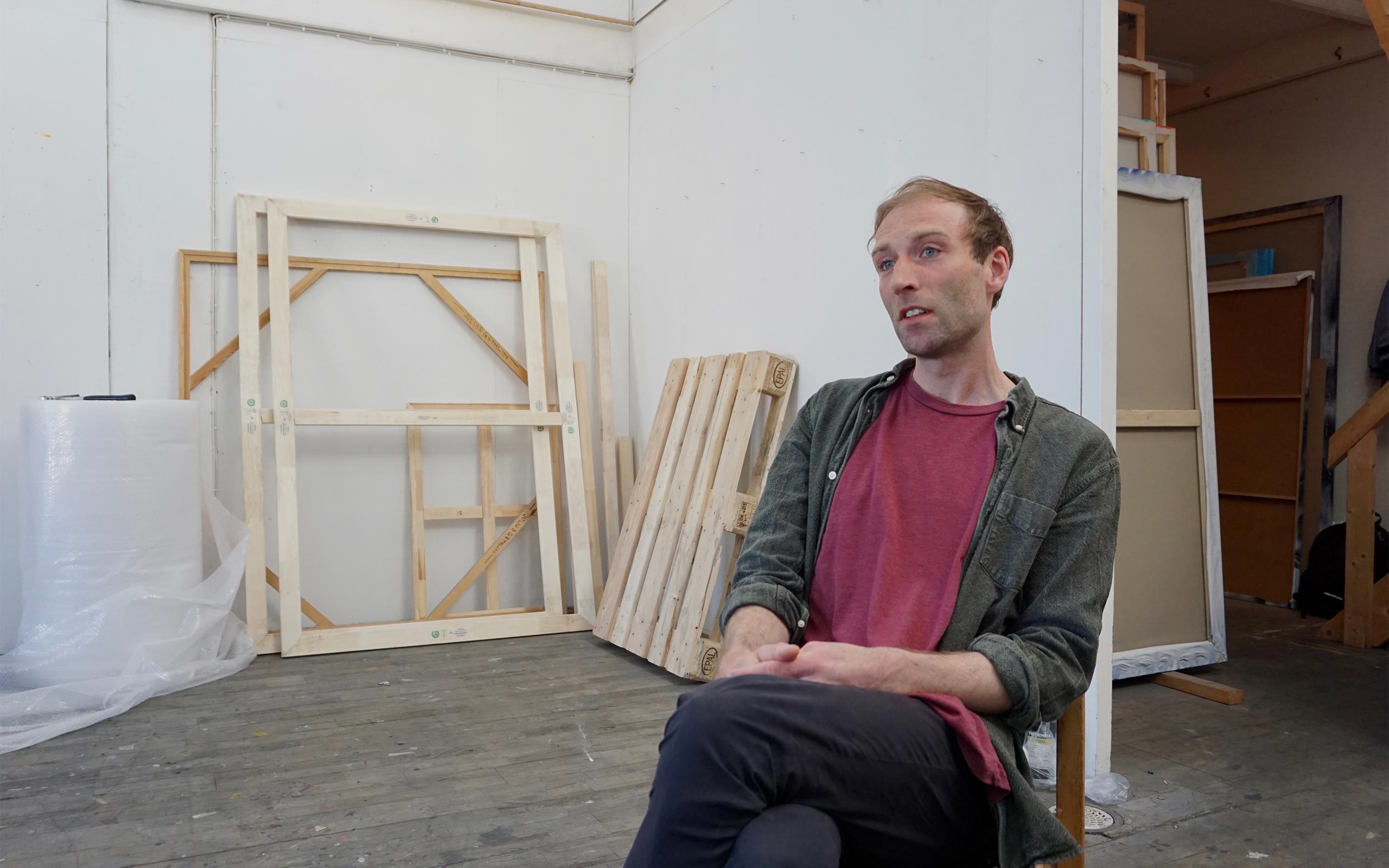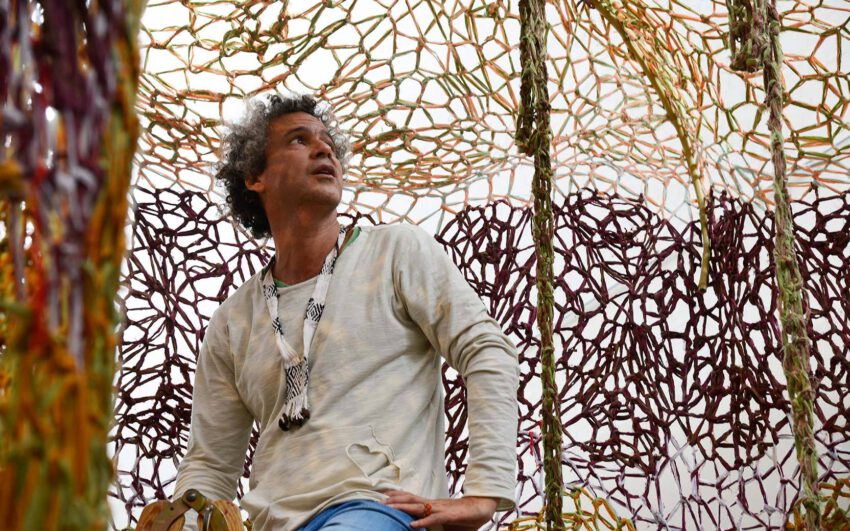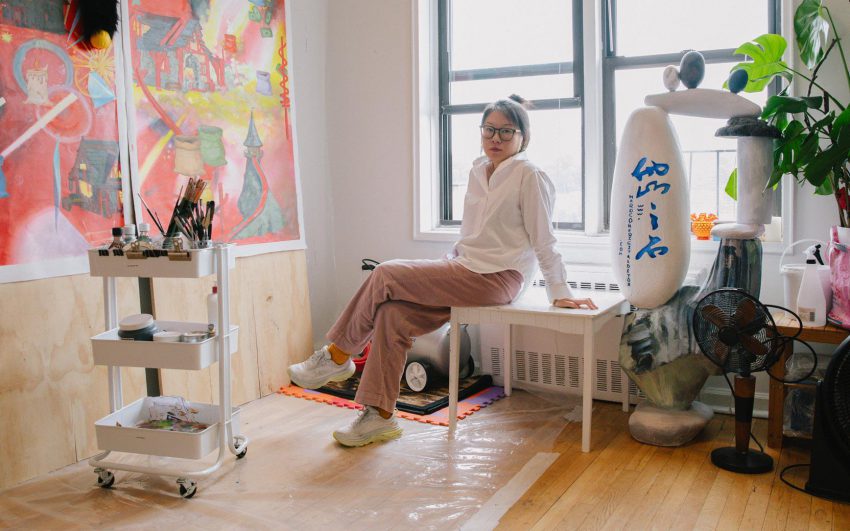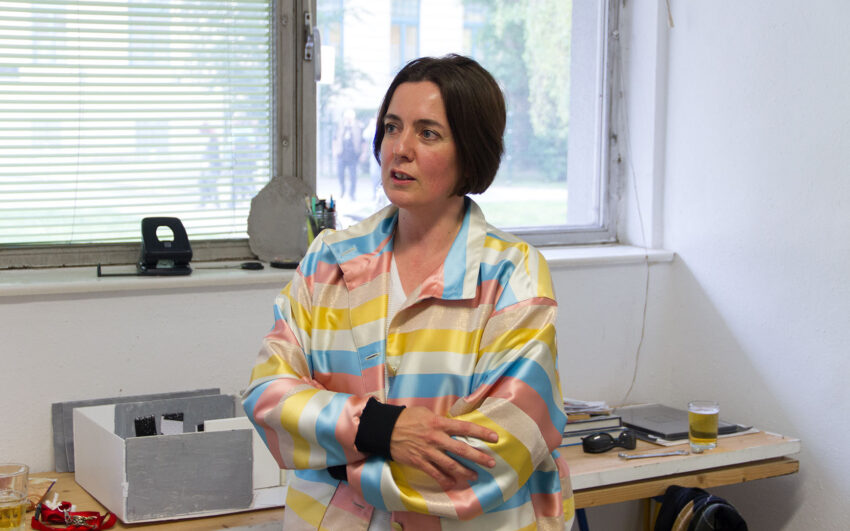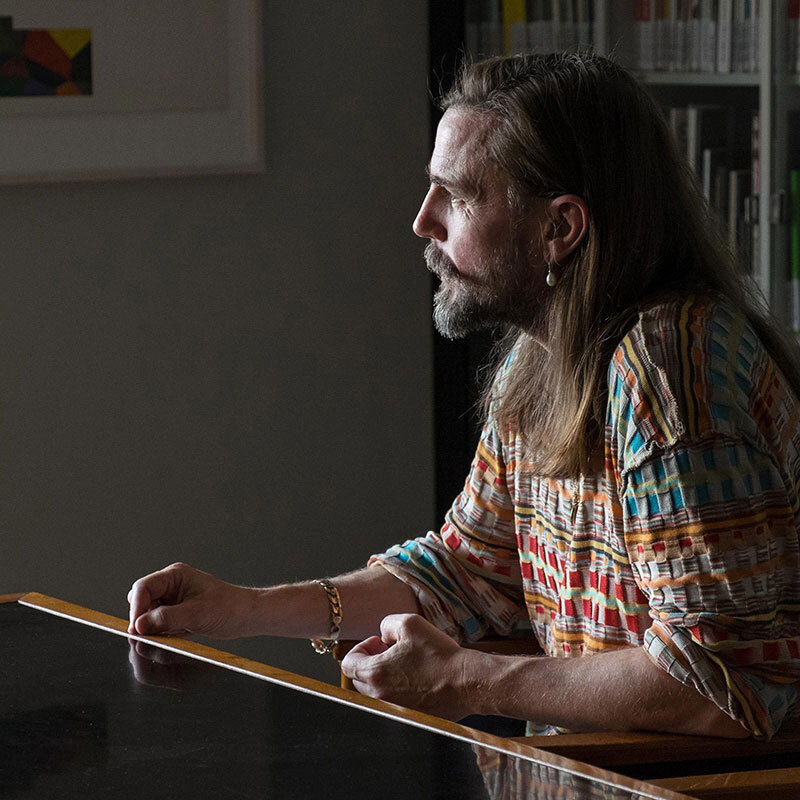The scene for contemporary art in Europe’s North is expanding and developing new dynamics as international collectors are watching the scene. With Nordic Notes we regularly cast the eye on the Nordic art and cultural scene, portraying its important actors.
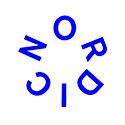
A frontrunner of contemporary abstract painting in Sweden, Julius Göthlin’s work to the observer might appear to depart from notions of space and various natural phenomena. In his own view however, his practice largely stems from striving to propel energies and feelings through physical structures. We speak to him in his studio in Stockholm about letting go of absolute control in the studio, allowing room instead for chance and happenstance to prevail, and get into how success might be related to differently when not arriving immediately, as was the case for him.
Julius, what drew you to start making art initially?
Since a very early age I had a strong urge to express myself through creative things like filmmaking, drawing and photography. Later, I got into graffiti and that movement. After graduating from high school and a few years of working in less stimulating day jobs, I applied for a preparatory art school.
That time really changed my life in many ways, and after opening up a Pandora’s box I quite instantly felt I needed this in my life and was accepted into the Royal Institute of Art in Stockholm.
What is the driving force and artistic concern that prompts your work forward today?
Within my practice, I investigate the possibilities of creating a two-dimensional place that is constantly in motion, a presence that has more in common with sound, air and light rather than physical objects and creates a feeling of the presence that cannot fully be captured within the image. I always try to incorporate materials and tools that are quite unorthodox. Tools that aren’t made for the purpose I’m trying to use it for and to think a bit reversely.
I have always worked in cycles where I like to stay by one idea for a long time but also then try to move forward before getting too comfortable.
How do you seek renewal in your practice to avoid getting too comfortable as you say?
I used to have a very strict way of working where I always built up a grid for every step in the process of a painting from start to finish. A few years ago, the need to break that structure had grown so strong I started working in the complete opposite way, leaving most of the process to chance and allowing the materials I worked with to take the pieces in unexpected directions instead of trying to force them to “behave” the way I wanted. Mainly I think the driving force and curiosity for me, lies within surprising myself on various levels. A big motivation is to do things in ways that are not very logic where the outcome is both surprising and unexpected.
I love the feeling when you have finished a painting and then look at it like; “what is this really?”. That feeling when everything just clicks and you look at something you’ve done that feels like something you’ve never seen before which makes you just want to keep looking at it, trying to understand it.
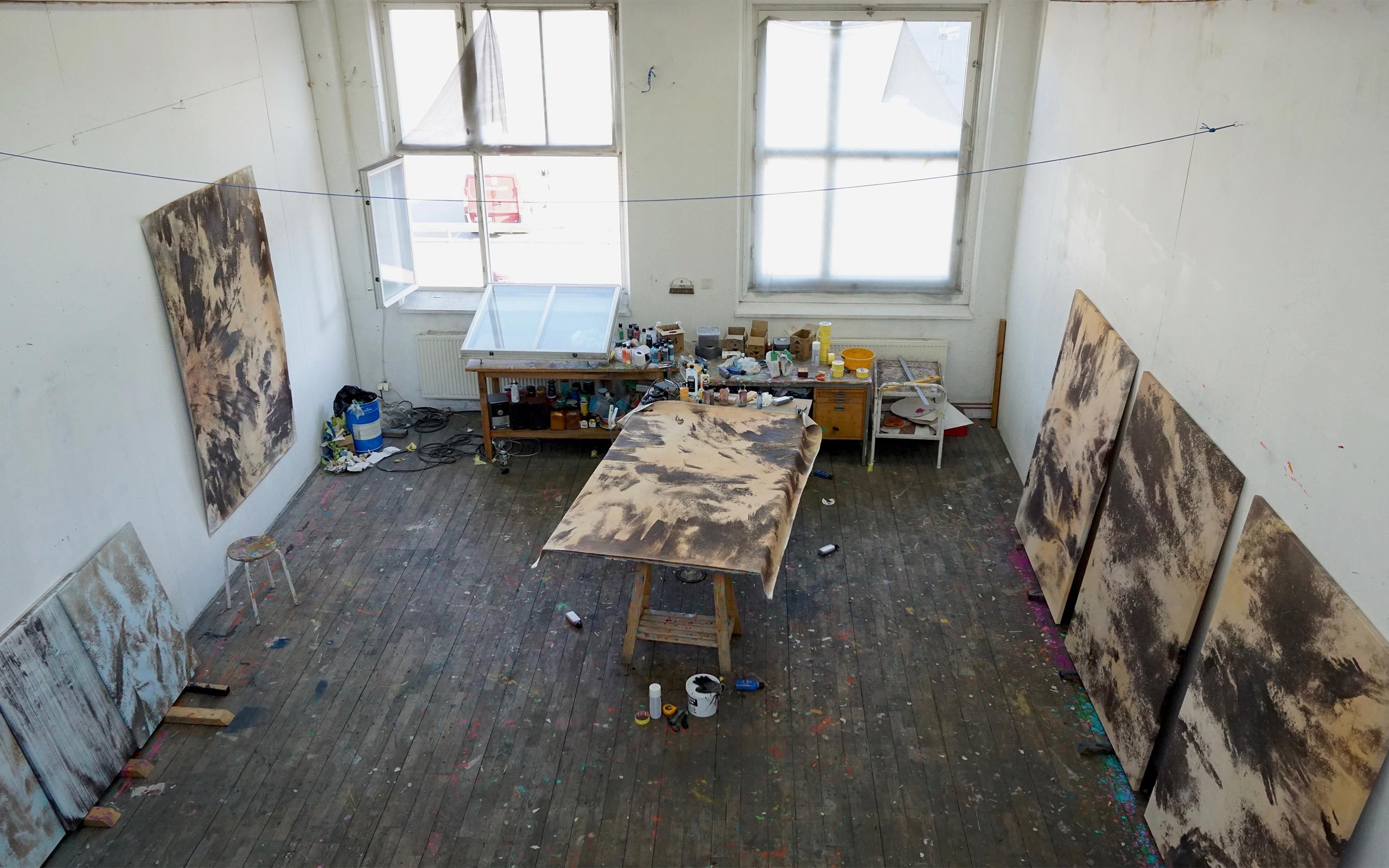
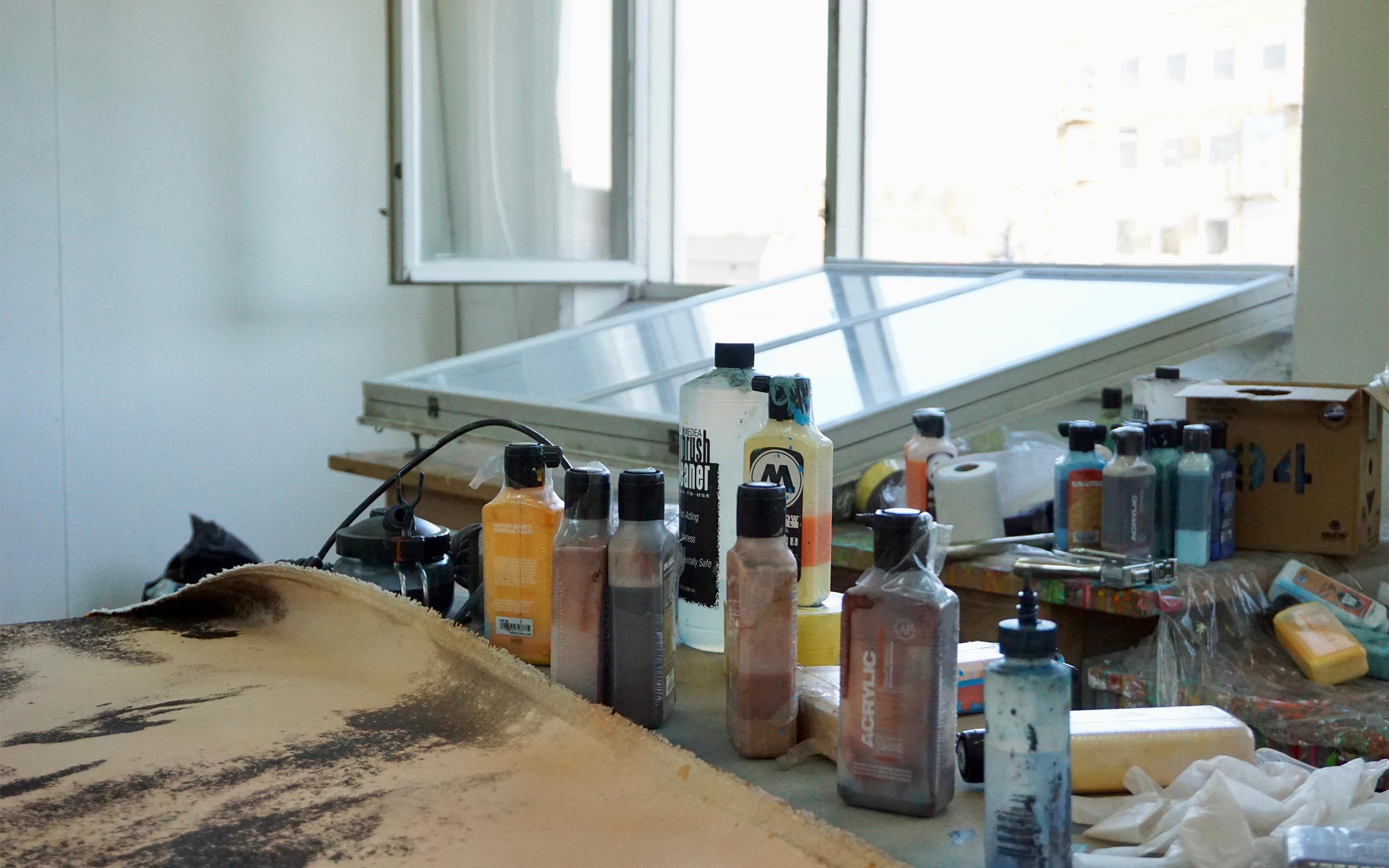
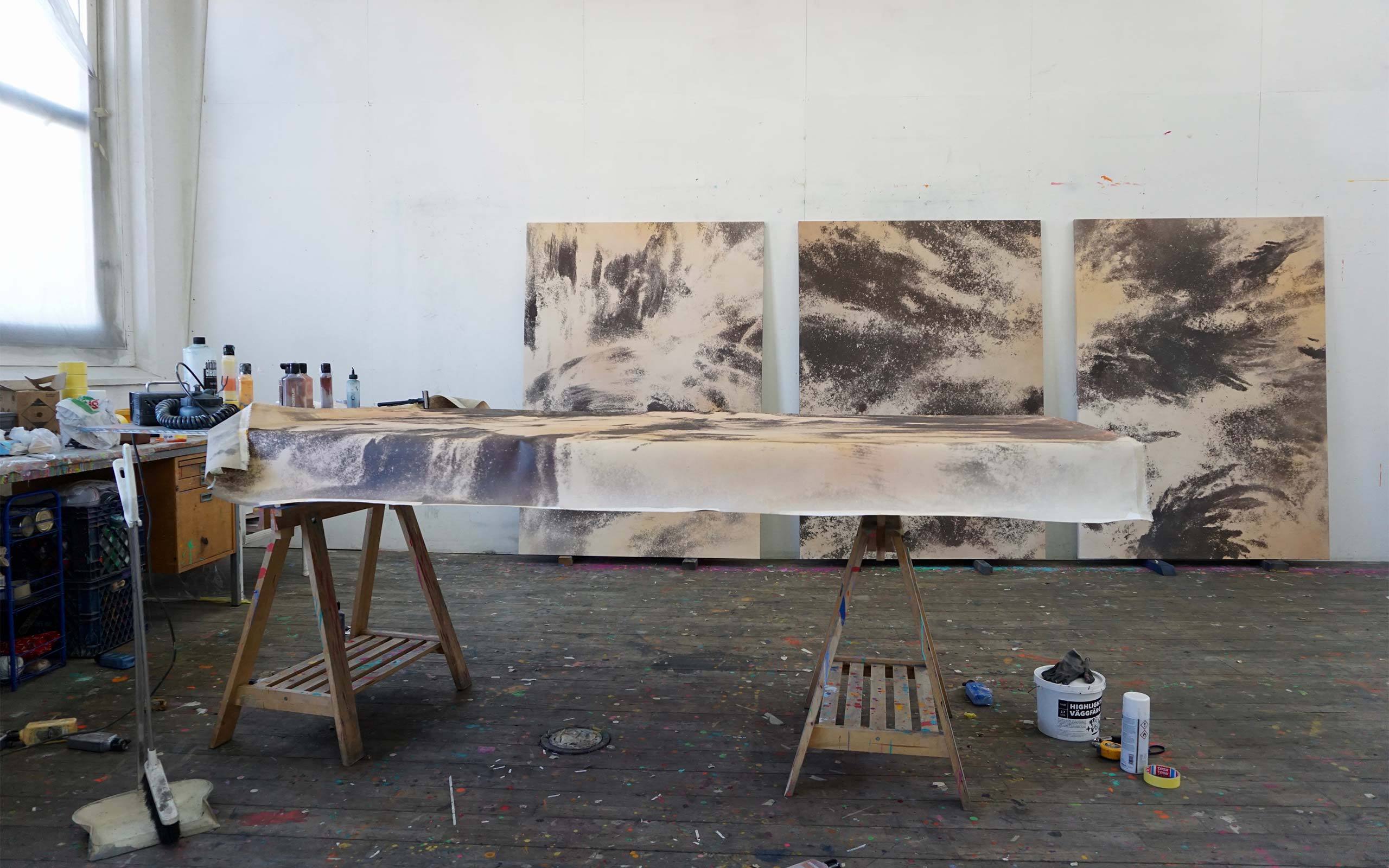
Tell us about this two-storey studio space you're occupying. It's impressive and remarkably spacious. We're currently in the beautiful industrial area of Ulvsunda, which is a suburb quite close to the city and as with any place where nice studios exist, an area that now is undergoing rapid changes. It'll probably look completely different around here in a few years. Sounds familiar, no?
Before I moved into this one, I had an extremely small studio space that I shared with a few other artists in a basement of an apartment building close to Fridhemsplan in the city. The location, vibe and rent of that studio was great but when I started changing my methods of working from slow-paced collages to using more obscure tools, I couldn't really make it work in that little studio anymore. I found myself climbing up in odd paths between the freeways nearby to find enough space to do what I wanted. The studio basically turned into a storage space for work that was being made under pressure at random places outside.
When winter arrived with snow and minus degrees, I realized the situation wasn't viable any longer. By accident, I noticed that a big studio in Ulvsunda industrial area was being rented out. Obviously as a young artist, I didn't really have the budget for a space like this but the feeling of finally being able to work in a place where I didn't have to compromise took the upper hand. In the end, I decided to try to compromise with a lot of other things in my life in order to make it work. I haven't regretted that decision once and the feeling when I arrive and open the door in the morning is just pure magical.
What does a regular day in the studio look like for you?
I usually start my days by listening to records and afterwards going for a long walk. To get new impressions that doesn’t just come from the studio is something I find very important.
I used to be quite a “good-grade student” type of person believing that the more hours I spent in the studio, the better the work would turn out. The cliché of the “never resting artist”. With time I have realized that for me personally, it’s not always beneficial to stay in the studio for too long and it is very important to put time aside to experience, see and feel things outside the studio to be able to get inspired and get new angles for your work that might be more beneficial than just doing your “hours”.
In the studio I work quite intuitively these days, doing experiments while at the same time working on more time consuming pieces. To be able to jump around, working simultaneously on various projects I find very important not to get stuck. That way the work also tends to keep feeding inspiration to each other.
Some people often believe your work of recent years to be about spacial and galaxical matters and various natural phenomena. What does your work however represent to you?
To me my work is about creating energy and feelings through physical structures causing movement. If that feeling is happy, sad, frightening or confusing I don’t want to decide for anyone. The same goes for what you read into the work, like what you said about spacial and galaxical matters. If the observer sees my work and get a feeling, a memory or sees galaxies is all very good to me. As long as people get a kind of feeling from the work I’m very happy.
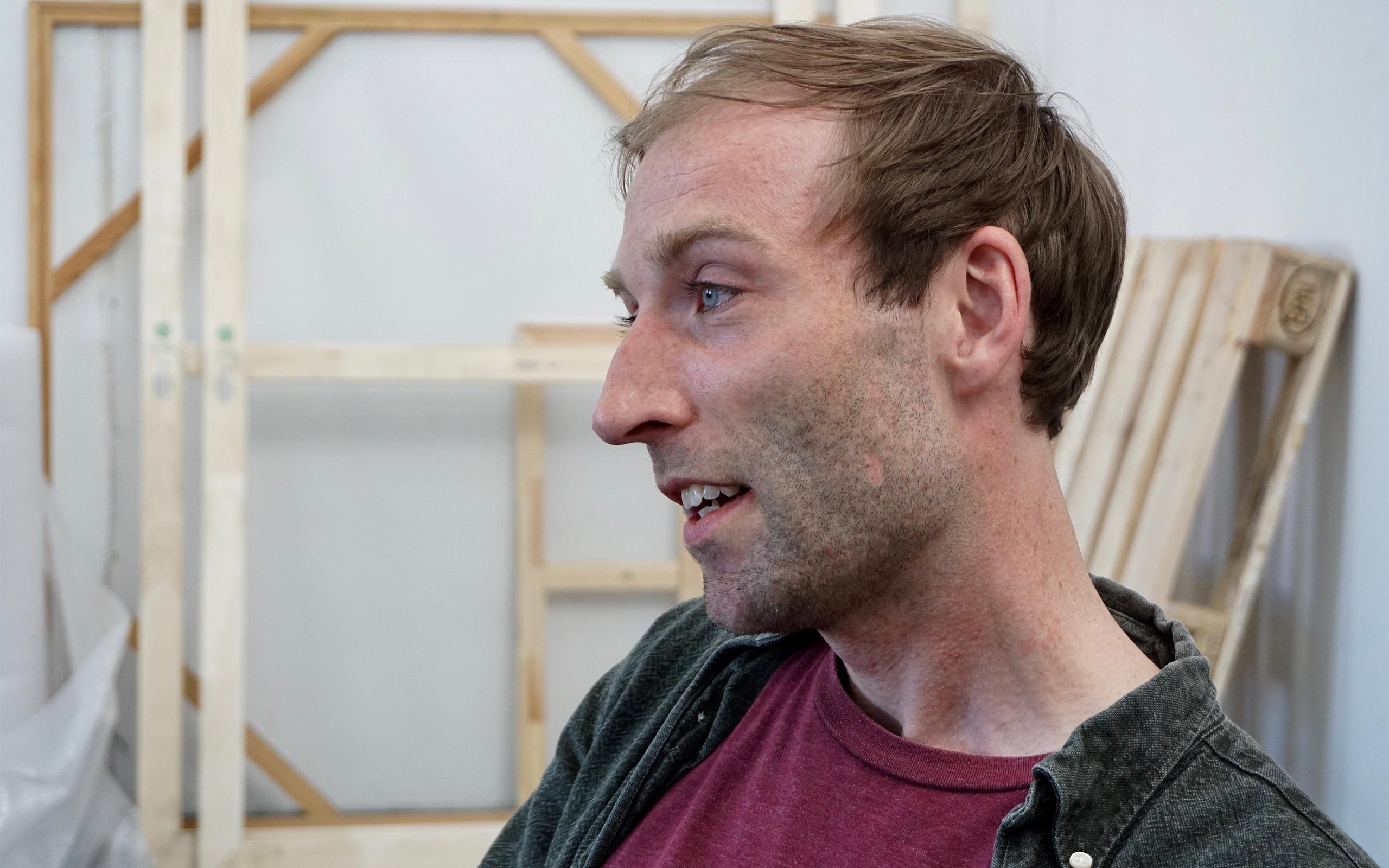
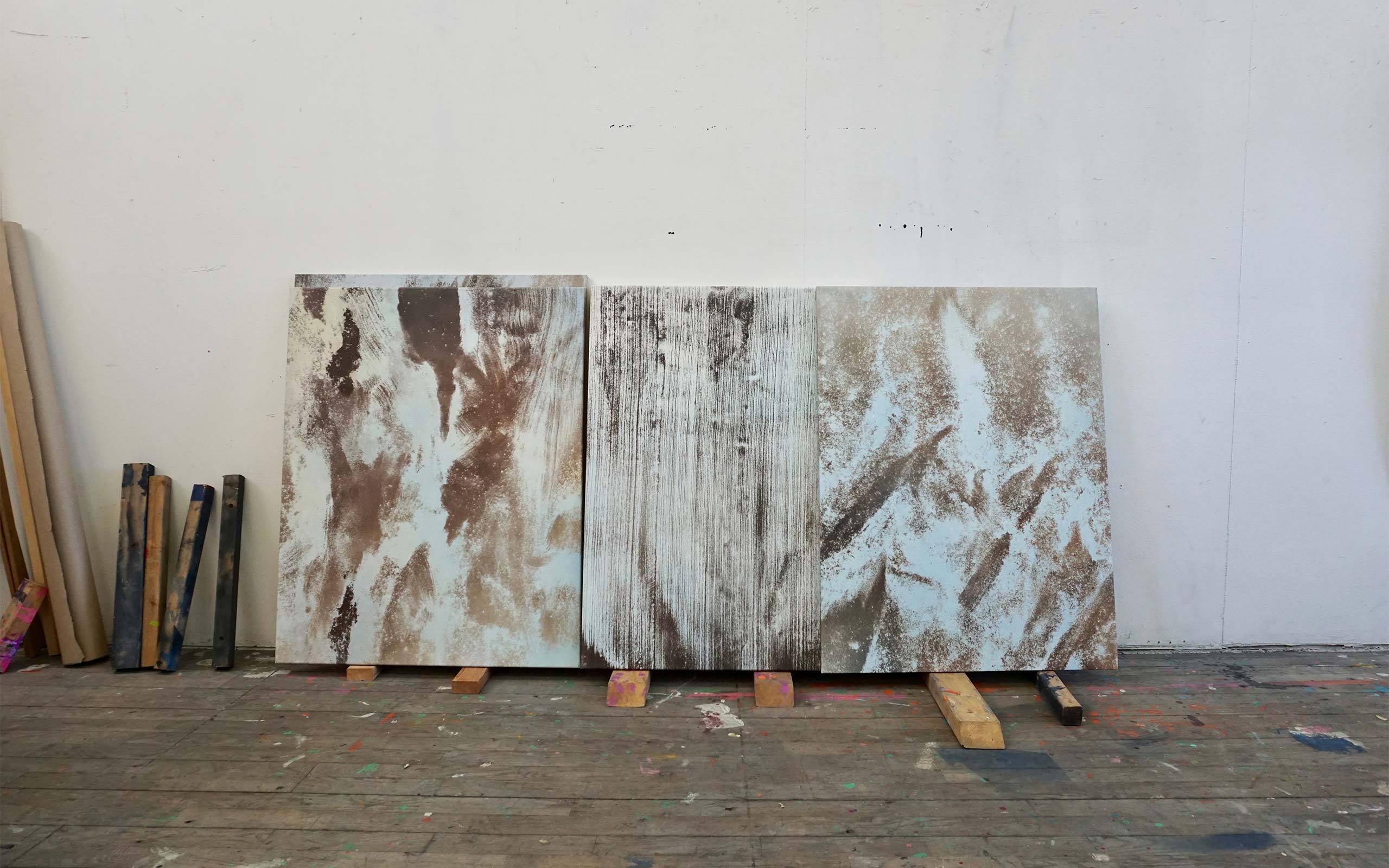
Your visual language appears to have developed and changed over time quite the bit, from the geometrical patterns and repetitions and architecturally structured works you did while back at art school.
I see everything as connected in a long trajectory and don’t relate to my work as different eras, but I can see how others might perceive it that way. I think what I’ve done in the studio has been very impacted generally by where in my life I’ve been at the time. When I was working with geometric repetitions, I was seeing a certain stable period in my life, marked by routine and structure. A lot of harmony. I think that enabled me to work for months on compositions with meticulous repetitions.
When I’ve been more restless it’s been very difficult to force myself to do that kind of work and the work then takes a different more freed direction. The beauty of making art is how it is aligned with your psyche and how you are feeling at any given time. I have always worked in cycles where I like to stay in one idea for a long time but also then try to move forward before you get too comfortable.
You also make music. How does your work in music align with your art, if at all?
Since I was quite young, I have been collecting vinyl records, and later on DJ-ing, making music and running a small-scale record label. The music I make and collect have a strong connection and impact on my art practice on many levels and I think I generally look at my paintings as if they were sound rather than paintings.
Can you describe that connection between sound and the art you are making? What I really do like with sound and music is that it is in constant motion. You can’t capture a song completely from listening to a small part and it’s all about being in a zone for a period. It’s an impossible task, but I fight for the idea of making two dimensional objects that has a similar vibrant feeling of constant motion as sound make, where you as a viewer have to accept the fact that you cannot fully grasp it from looking at it for a few seconds.
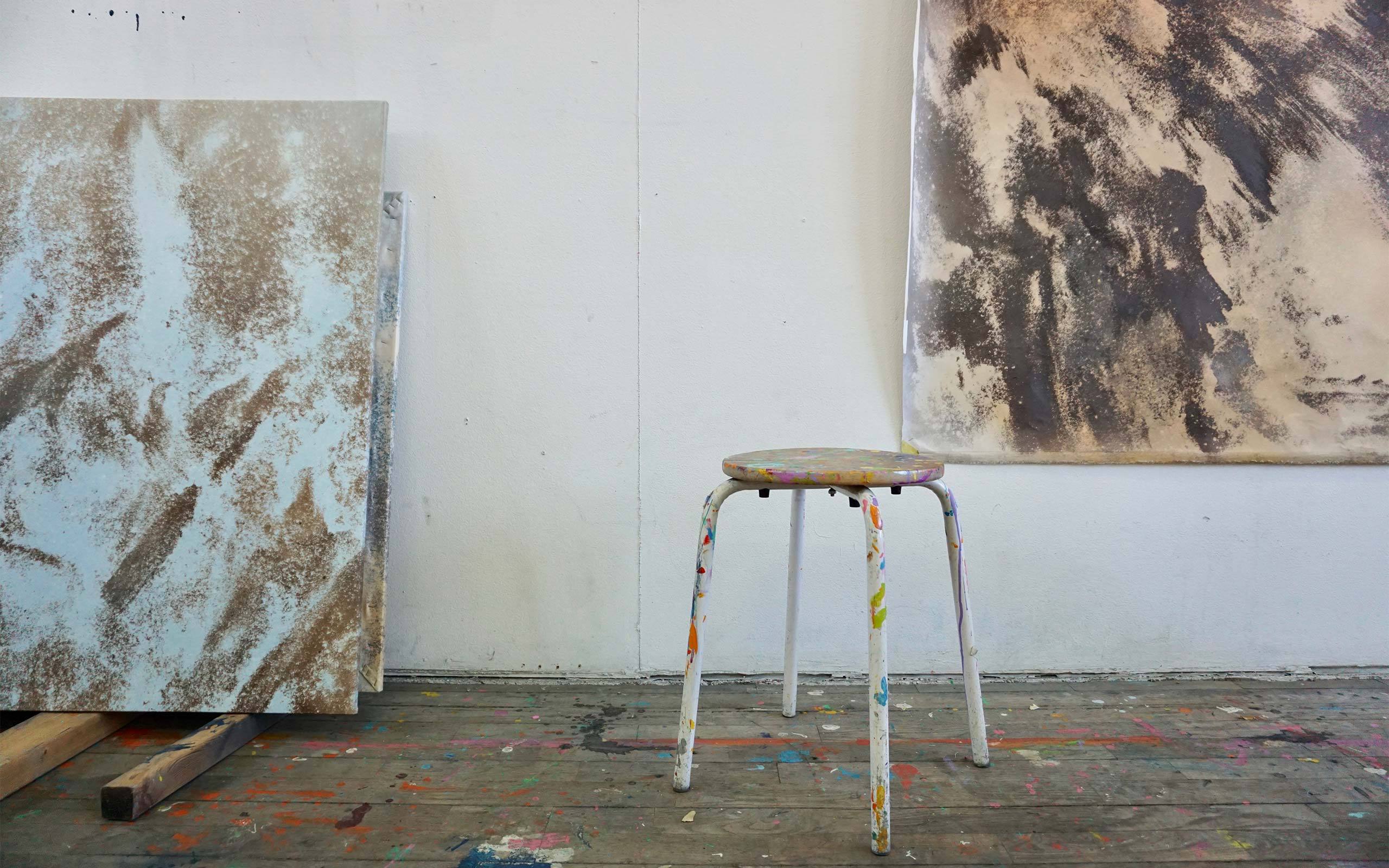
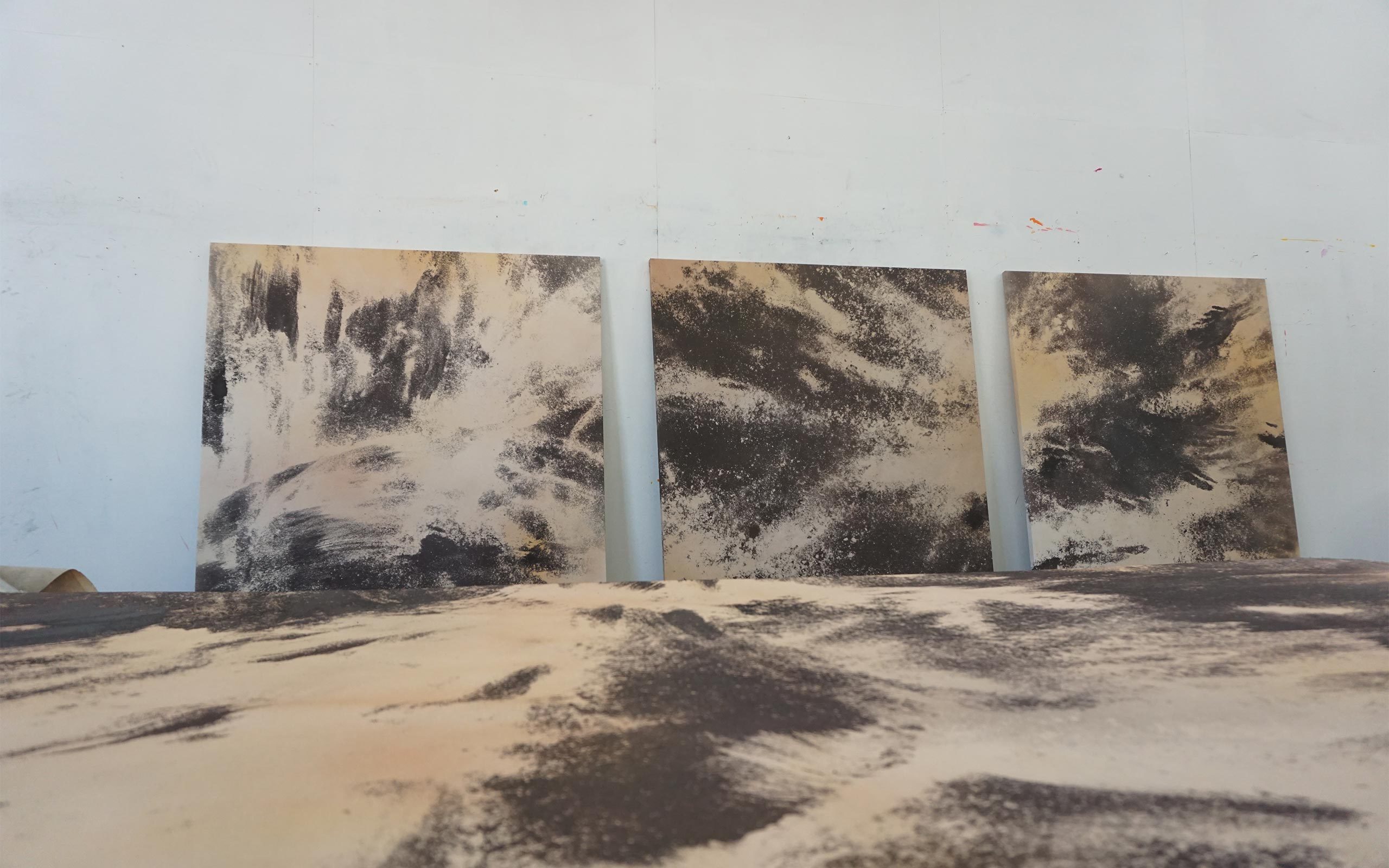
In many ways the art sphere is marked by chance and unpredictability as far as success in concerned. There was a point in time when it felt that you were having a momentum, exploding on to the local scene in Stockholm. However quite some time had already passed following art school. Looking back, do you think success is related to differently if it isn’t immediate?
For about two years I was literally making art just for myself in the studio, seen by studio mates and parents and what you arrive at in a situation like that is to really question your motifs and incentives to be making art. It’s inevitable to be confronted with questions about at what cost, literally and figuratively speaking, you are willing to pursue your artistic practice. If I had been in demand instantly, I suppose that would have been great at the time, but this way I did get to come to terms with my making art because I really want to. As an artist you will be faced with ultimatums along these lines repeatedly over the years, but I think it is in those moments where you are juggling day jobs to make ends meet or struck by a feeling of doubt as to if anyone really cares what you do in the studio that it becomes particularly pressing.
People are generally quite young when graduating from art school. I think altogether it appears useful for a few years of real-life experiences to come in to play before a storm arrives. However, I think artists touch base with the world outside of school much earlier today than before. Things have changed significantly.
It used to be that nothing happened before an artist had finished their master’s degree whereas today galleries are approaching artists already in the first years of their bachelor’s studies. Similarly, young artists often are disrupting the typical structures by jointly creating their own exhibition platforms and vehicles together already at school. This was rarely heard of before.
It was an unwritten rule when I was still at school, the way I perceived it. A very big difference today is the prevalence of social media like Instagram that has helped artists to professionalize their practices in a way where it is possible to gain significant exposure without the impact of a third party. I was quite early using Instagram to channel my work but remember people around me reacting to it as something strange. Today in contrast every other art student at preparatory art school level will have an artist Instagram page to promote their work.
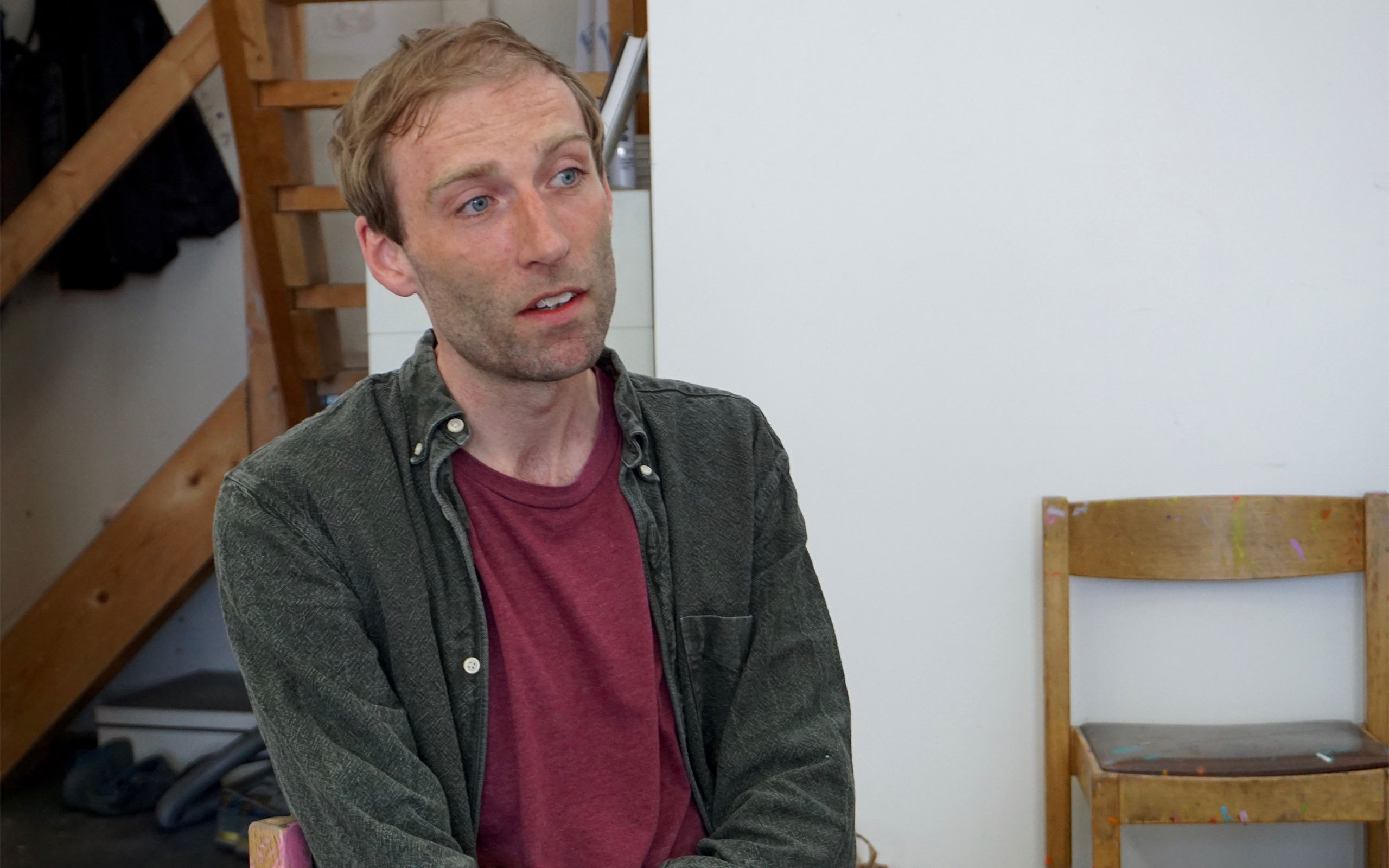
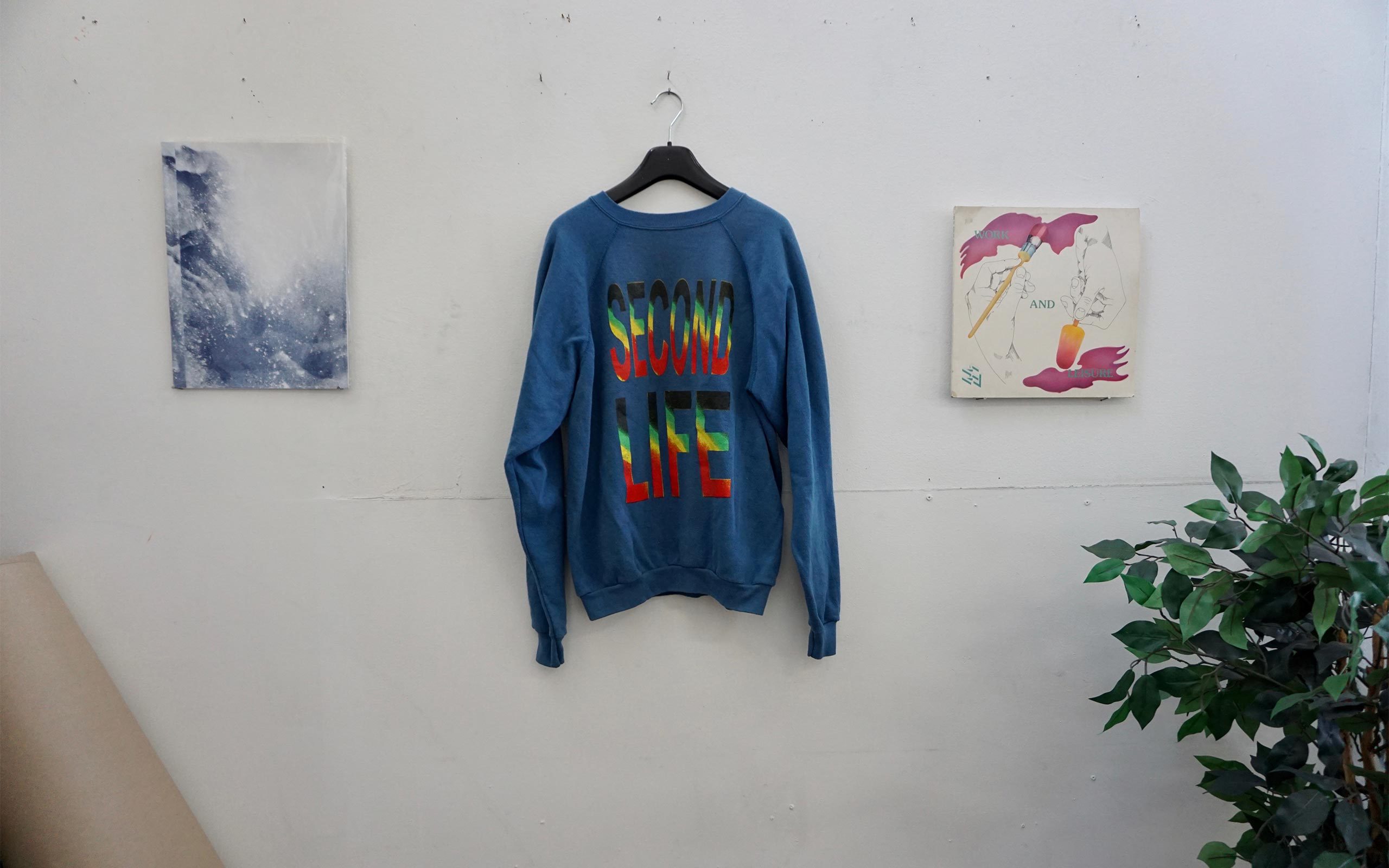
How do you keep a clear perspective in the studio and not let yourself be influenced by all that could derail an interest, e.g. art market factors?
This is something I think about almost daily and I’m not sure a I have a good answer to that. I think it’s never been as easy as now to have your 15 minutes fame in the spotlight. It’s also never been as “hot” to constantly talk about the next new thing; the next generation or the new wave of something. This also runs in line with society at large right now; everything is disposable. In with the new, out with the old. The attention span afforded to an artist is so limited. The challenge as to how to keep relevant over time and have longevity as an artist I think is something that is really felt today.
Lastly, do you have any future aspirations for your work that you would like to see materialize in the next few years to come?
In my paintings there is always a lot of references to physical objects on various levels. Working with sculpture has been something I’ve been wanting to bring into my practice but have never felt the timing was right or that I was ready for bringing it in to my world. But this spring I started working and experimenting with a series of sculptural works that in various ways tries to freeze time and come into play with my two-dimensional works. This is something I very much do look forward to keep exploring further.

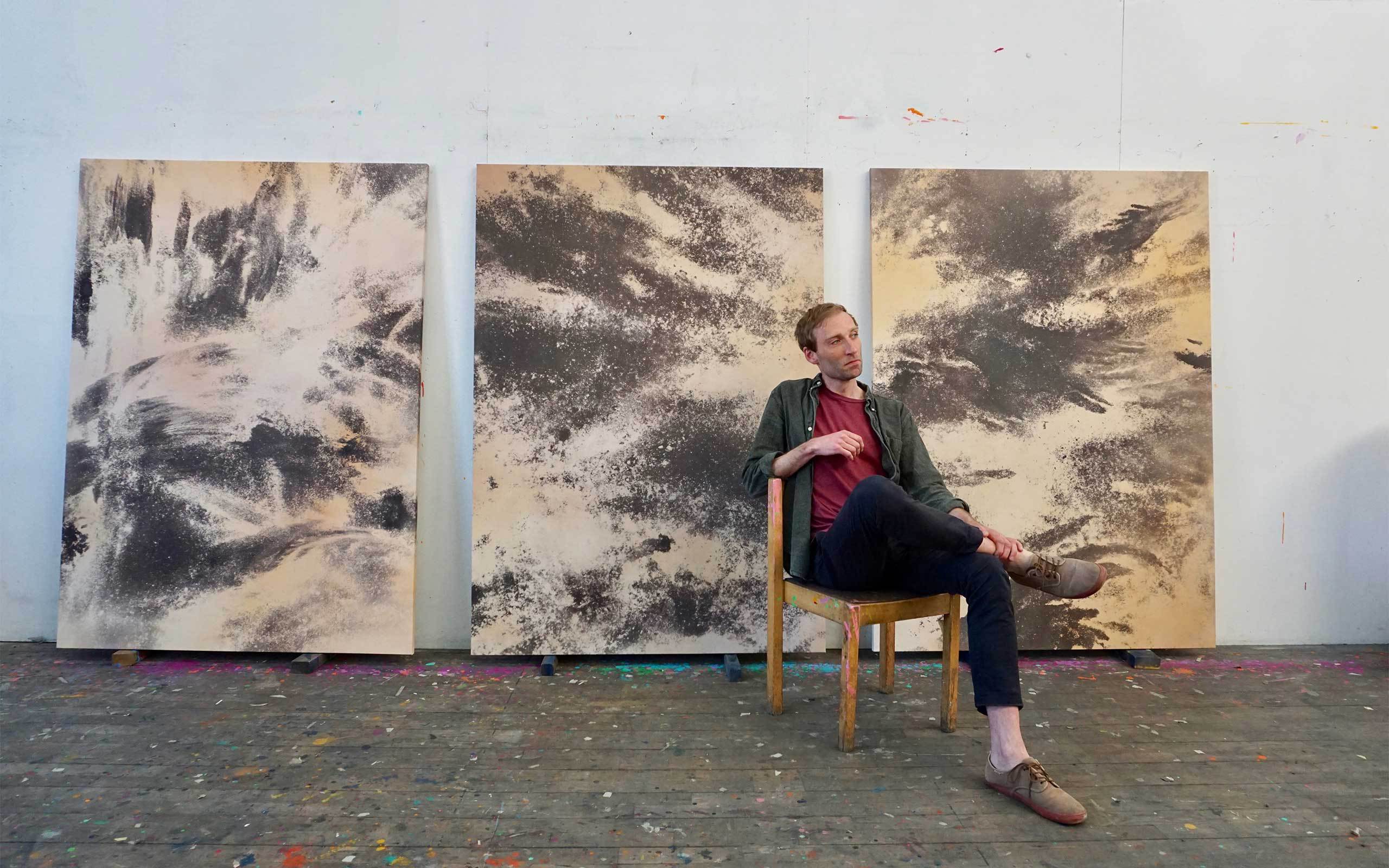
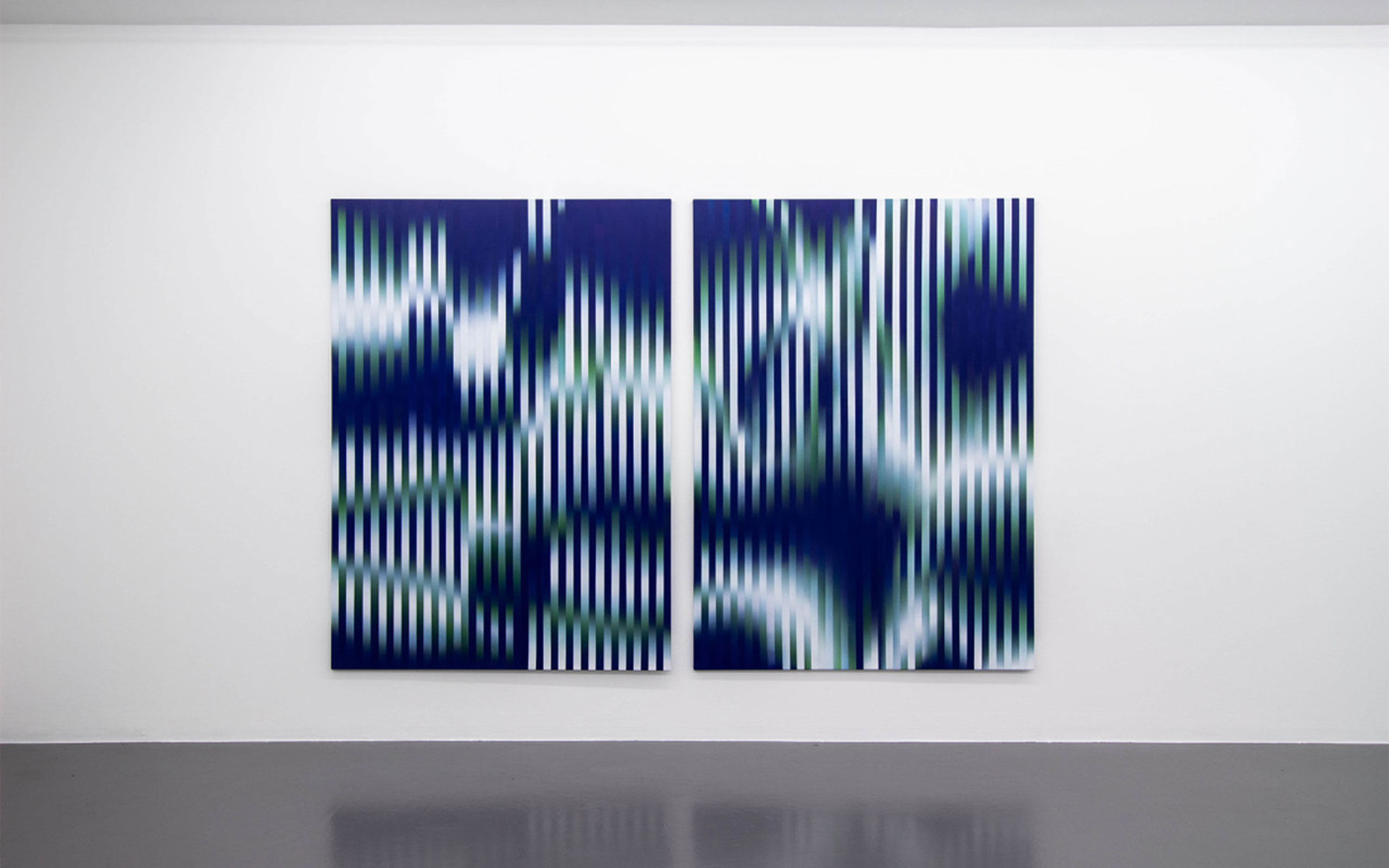
Exhibition “W A V E L E N G T H”, 2018, courtesy Belenius
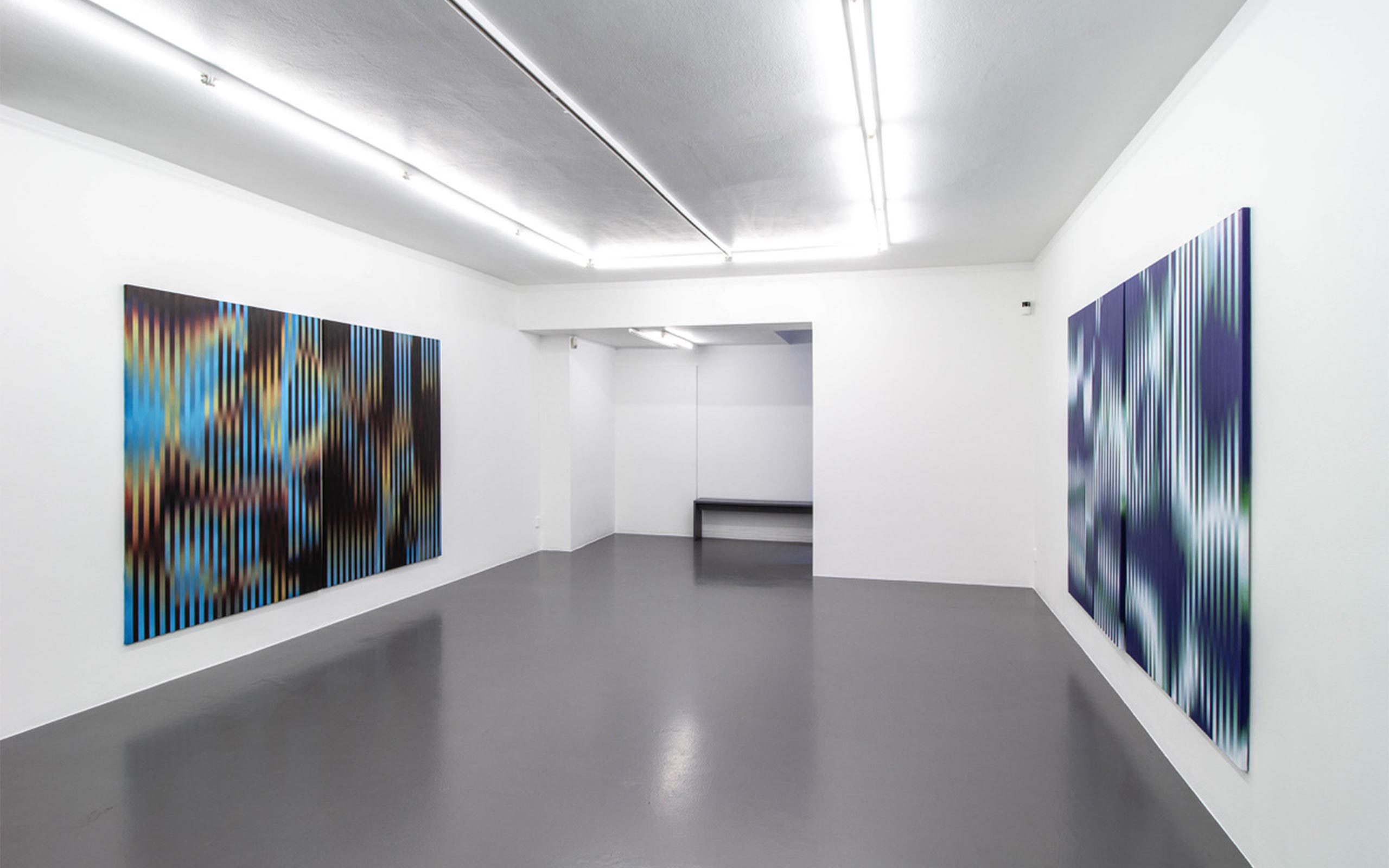
Exhibition “W A V E L E N G T H”, 2018, courtesy Belenius
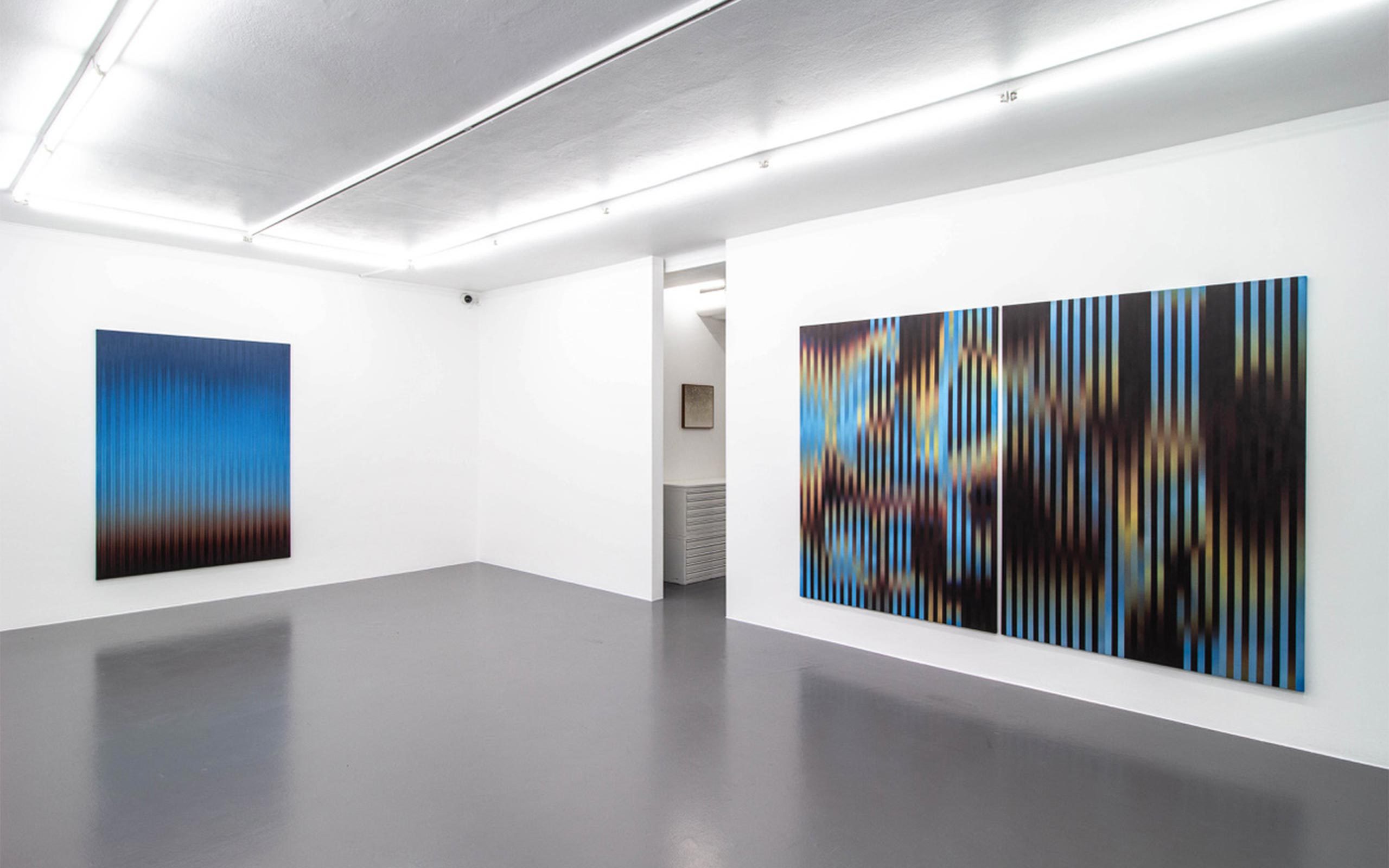
Exhibition “W A V E L E N G T H”, 2018, courtesy Belenius
Interview: Ashik Zaman
Photo: Maria-Corina Wahlin


